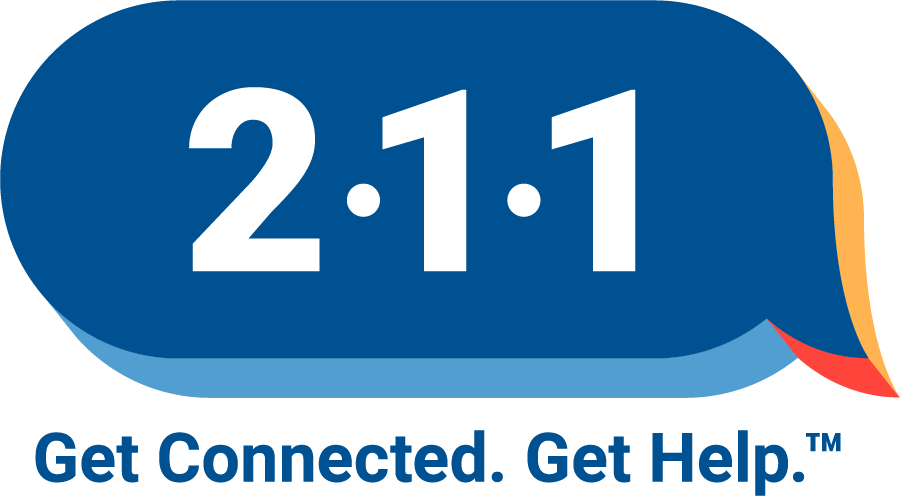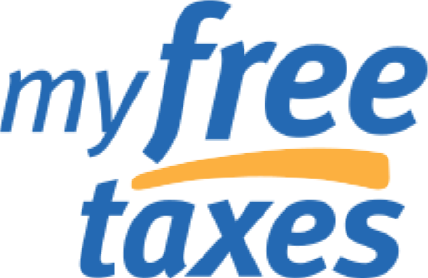We hope the portrait of struggling households described in this Real Cost Measure study helps leaders from all sectors:
Identify the true level of need in their communities more clearly and:
- Set a bar for the level of effective buying power we want to help families reach and the least decent standard of living we, as a society, allow
- Enable communities to engage in data-informed conversations about the local cost of living and the trade-offs struggling families often have to make
- Promote a better understanding of how families in different situations have different needs, even if they have seemingly similar total incomes; and
- Identify possible advocacy solutions to help families in different situations become more financially stable and resilient
Below, we briefly outline some possible areas of policy and systems change for communities to consider as they explore how best to help struggling families.
Households living below the Real Cost Measure are predominantly working families. Despite their efforts, the data makes it clear that hard work alone is not enough to foster economic mobility and promote long-term financial security. There is often a persistent narrative around “deservedness” and the ideals of “pulling oneself up by the bootstraps,” however, that is entrenched in the way we talk about how families should deal with economic hardship. Often this stance suggests that individual effort and personal responsibility are the primary drivers of economic success, but we know this is not the case, as the Real Cost Measure lays out. It is both unrealistic and uncompassionate to expect families to overcome these challenges through individual efforts alone. The purpose of the Real Cost Measure is to enable people and communities to see with clear eyes the challenges that families face and the systems that either serve to lift them up or require a change in order to do so.
All Californians would benefit if more struggling families move up the ladder toward economic stability. Community, business, civic, nonprofit, and philanthropic leaders all have a role in achieving this goal. Access to quality education, health care, infrastructure, and social safety nets are critical factors that can enable Californians to thrive. These public investments are essential for fostering equitable conditions and providing households with the necessary resources to achieve economic mobility.
We have placed a number of our suggestions for leaders to consider throughout the Executive Summary as ways to frame and think about key findings. Additionally, we highlight here some key topics and pose questions designed to spur conversation as well as potential action.
Preserve and expand health coverage and access.
Access to health coverage and care is a critical factor in reducing financial instability for households. Serious illnesses or injuries can result in high medical costs. Medical bills are a leading cause of bankruptcy and can catapult families toward destitution. It is well established that access to preventative care improves individual and collective wellness outcomes for families and communities. It is imperative that health coverage results in health access to meet the health needs of families in a timely and responsive manner.
California has made significant strides in enrolling eligible Californians in affordable health coverage, including more than 15.4 million in Medi-Cal as of November 2022.4 This represents an increase in enrollment of nearly 2.9 million Californians since 2019. Thanks to policy expansions in recent years, all low-income children and adults in California are now eligible for Medi-Cal, irrespective of citizenship status.5
A crucial step in promoting financial stability for all is protecting these achievements as well as expanding access to Covered California regardless of immigration status for those who make over the Medi-Cal threshold.
However, health care enrollment does not necessarily result in timely access to appropriate and equitable care. California is still grappling with many health care related challenges that warrant consideration and action. These include:
- One barrier to care is finding a doctor. In 2020, all races/ethnicities had greater difficulty finding a specialist than a primary care doctor. About one in six Black and multiracial adults reported difficulty accessing specialty care. About one in five Latinx Californians reported not having a usual source of care and experiencing difficulty finding a specialist.
- The Black population in California experienced the highest death rates from breast, cervical, colorectal, lung, and prostate cancer among all racial and ethnic groups.
Questions for consideration
- What impact would a more inclusive safety net have on our state’s collective well-being?
- The high cost of housing is seen in the fact that 32% of families who live below the Real Cost Measure cohabitate with others, as we find over one million households throughout the state living with other unrelated people in a household.
Empower individuals in advancing their education.
Education is a key factor in lifting households out of financial struggle. Our data shows that householders with some college education or a college degree have a significantly lower rate of living below the Real Cost Measure. It’s encouraging to note that 38% of struggling householders have some college credits already and that 50% of struggling households with high school diplomas have the potential to seek college degrees with the right support. For those (50%) without a high school diploma, the path towards higher education may seem difficult, but with more accessible assistance, many can take the steps towards a brighter future.
California has invested a historic amount of one-time funds in recent years in the “Community Schools Partnership Program” ($4.1 billion to be allocated via grants to Local Education Agencies from 2021 to 2031). These partnerships provide an integrated focus on academics, health and social services, youth and community development, and community engagement. This is a critical opportunity to align systems of care with families leading the community-centered design. However, oversight of the Community Schools program and consistent implementation of family-led systems design appears to be lacking and should be viewed as a critical opportunity for community conversations using the Real Cost Measure as a tool to understand the needs of families and children.
Questions for consideration
- What role does early education and care have in envisioning a future where all Californians thrive?
- What changes can be made in the nearer term to have a long-term positive impact?
- What community-led conversations are happening locally to help guide investments in education, or school transformation, such as Community Schools?
Ensure all families have access to quality child care and preschool.
Families with young children face high costs of child care and limited opportunities to work or pursue education due to caregiving responsibilities that often default to family members, particularly women. This is why we suggest implementing dual-generation strategies, such as offering child care and early childhood education along with educational opportunities for parents, especially single mothers, which can help parents increase their education, work more hours, or seek better employment.
It is also important to acknowledge that the child care workforce is primarily made up of women, especially women of color. The current reimbursement rate-setting methodology establishes rates that are not sufficient to cover the true cost of providing early learning and care services in accordance with current state licensing and program quality requirements. This hamstrings the ability of providers to build an equitable child care provider network and for families to afford and access care. A well-funded mixed-delivery system, which includes both community-based providers and local educational agencies is essential to the wellbeing of children and families across the state.
Investing in child care and preschool can make a significant impact on the lives of struggling families. By supporting families in this way, we can help them build a strong foundation for success, reduce the financial burden of child care, and provide children with the tools they need to thrive.
Questions for consideration
- What role does early education and care have in envisioning a future where all Californians thrive?
- What changes can be made in the nearer term to have a long-term positive impact?
Expand the reach and impact of income support programs such as the Earned Income Tax Credit.
In California, an estimated 25.5% of EITC-eligible households do not claim the credit, leaving $1.5 billion unclaimed annually. It is estimated that for every dollar a household receives in tax credits, $1.70 of economic activity is generated. More simply put, families with low incomes that get cash via tax filing and tax credits rapidly put those funds to work in their community by repairing the family car, buying groceries, or paying for a rental deposit. These dollars are immediately circulating in the local economy, making a tangible difference for
both families and businesses. Taking measures to expand tax credits and make them more accessible through simplified, free tax filing options is a data driven way to reduce poverty, improve lifelong results for children, and boost local economies.
While tax credits make a huge difference in a family’s household budget, especially households
with children, other public benefits play a critical role in helping families weather tough economic times. Cash supports such as child care assistance, CalWORKs, CalFresh, and Medi-Cal can help struggling families meet their basic needs. To ensure that California’s anti-poverty programs are focused on family well-being we could work to eliminate all non-federally required sanctions, so families could continue to get the resources needed to comply with state requirements. Additionally, streamlining the application process to ensure eligible families receive all benefits they are entitled to would have significant positive impacts on households and local economies. For example, using a single eligibility standard and application form for various public assistance programs would simplify the process and help ensure families access all benefits for which they qualify.
Even if California improves the process for applying and claiming public benefits, as well as filing and claiming tax credits eligibility for these benefits excludes far too many households below the Real Cost Measure. Adjusting these limits and raising the number of assets disregarded would provide much-needed assistance. Another possible solution is to establish escrow savings accounts where public benefit funds are deposited, similar to how the Department of Housing and Urban Development (HUD) administers the Family Self-Sufficiency (FSS) program to promote increased earnings and savings among families receiving
HUD-funded rental assistance. Under this model, as a household’s income increases and the dollar amount of benefits is reduced, the “savings” in reduced benefit awards could be deposited in savings accounts for households. This would help families transition off public assistance while simultaneously building savings for the future.
Questions for consideration
- What should access to public benefits look and feel like for households struggling to get by?
- How could the state of California use the data it has on file regarding household earnings and eligibility for public programs to streamline administration and increase uptake of things like tax credits?
Promote asset building and shield families from predatory financial traps
Families below the Real Cost Measure face financial instability and often encounter irregular income patterns, leading to difficult decisions and trade-offs. Households with variable incomes, such as gig workers, may be forced to make sacrifices such as reducing utility usage, negotiating payment extensions with landlords and banks, borrowing from friends and family, or compromising on health care needs. These families need alternatives to pricey financial services like payday loans, notorious for trapping people in debt cycles.
One solution is low-interest loans through workplace-based programs like Salary Finance. Another approach involves helping households establish credit by reporting payment histories to credit bureaus, exemplified by Payment Reporting Builds Credit (PBRC), which offers a free alternative credit score to help families build a financial safety net.
California is exploring CalAccount, a public banking option via a Blue Ribbon Commission, which could greatly enhance access to free banking options, particularly for the one in four Californians that lack full access to the financial system.
Approximately 7% in the state are unbanked, and an additional 18% use alternative financial services. These individuals and households, often Black, brown, or low-income, face financial disparities. In California, 46% of Black households, 41% of Latino/a households, and 13% of Asian and Pacific Islander (API) households are unbanked or underbanked. Successfully implementing CalAccount is pivotal for reshaping financial institutions and fostering equity in an inclusive California.
Questions for consideration
- What are opportunities for asset building that reflect the needs in your community?
- What steps could California take to ensure more households have access to financial institutions that meet their needs?
- What impact would a more inclusive safety net have on our state’s collective well-being?
Expand the availability of housing and bolster assistance for renters.
The impact of where a family lives extends far beyond financial stress, influencing essentially every aspect of their lives. Making enhancements in this realm is impactful beyond just alleviating financial strain. This is especially true when considering the implications living conditions have on struggling households. Unfortunately, a significant shortage of affordable housing remains a stark reality in the majority of communities across California and the history of exclusionary lending practices by financial institutions has resulted in structural discrimination and cost burdens hitting people with disabilities and Black, Latinx, and Indigenous households the hardest.
While the construction of new housing units is vital, it is evident that a mere increase in supply cannot fully solve the affordability challenge. We need comprehensive solutions beyond construction alone. Given that a significant portion of struggling households are renters, we suggest expanding and maximizing the utilization of California’s renters’ tax credit. Making it refundable, indexing it to inflation, and advocating for a refundable federal credit can bring substantial improvements for struggling households on a significant scale.
Questions for consideration
- What is a goal you have for families in your community around access to affordable housing?
- What is a policy improvement that could support that goal?
Facilitate immigrant integration and a path to naturalization.
Households led by naturalized immigrants struggle at a much lower rate than those led by
non-naturalized immigrants. Also, as our analysis shows, households that lack a fluent English
speaker over the age of 14 struggle at a higher rate.
To address these challenges and uplift struggling immigrant households, we recommend creating a safer and more accessible environment to pursue citizenship. By streamlining the naturalization process and enhancing support for English language fluency, we can unlock brighter prospects for a significant share of our immigrant communities.
Additionally, establishing access to safety net services, regardless of immigration status, is a
strategy to address equity issues as well as build economic inclusion and resiliency. California
already has extended eligibility for Medi-Cal health coverage to undocumented residents, which is a critical support, but there may be other ways to support undocumented working households. For example, unemployment benefits are one of the most effective economic stabilizers for our economy and ways to keep workers in their communities and families from falling into poverty. Considering that 20% of all Californians under the age of 18 live with someone who is undocumented or is undocumented themselves, the lack of access to unemployment insurance can severely negatively impact households already struggling. Furthermore, undocumented immigrant workers contribute $3.7 billion in state and local taxes, and taxes on their wages contribute an estimated $485 million to the unemployment insurance system in California every year.
Connect work to shared prosperity.
The vast majority of households facing financial struggles — 9 out of 10 — are already part of the workforce. This highlights that the primary obstacle lies not in securing employment, but rather in ensuring that these jobs provide fair and livable wages. While California’s incremental increase in the minimum wage is a step in the right direction, it is important to recognize that it may only lift many households above the federal poverty level, still leaving them earning considerably below the Real Cost Measure. We need to make work pay.
To truly make a difference, it is crucial to create opportunities for all struggling workers to advance along the wage scale, extending beyond the minimum wage. Simply providing job training will fall short. Efforts must also focus on effectively assessing skills and aligning them with the demands of the job market. Initiatives like the Community Economic Resilience Fund, which is designed to support diversifying local economies and developing sustainable industries that create high-quality, broadly accessible jobs for all Californians, exemplify the goals and strategies we can collectively pursue to ensure that struggling workers can reach their full potential. By investing in comprehensive strategies that address both fair wages and talent development, we can empower our workforce, enhance economic stability, and uplift struggling households across California.
Questions for consideration
- What does a “livable wage” mean?
- What strategies can we employ to build a strong workforce with wages and benefits that allow workers to live at or above the Real Cost Measure?
Adapt to automation in the future of work.
As work patterns and job stability undergo profound transformations, it is crucial to adapt our social systems accordingly. Traditional assumptions of lifelong employment are no longer the norm, with individuals often transitioning between jobs and experiencing periods of unemployment. With over a third of the workforce engaged in contingent work or managing multiple jobs characterized by unpredictable schedules, we must acknowledge this shifting reality.
It is time to explore approaches such as ensuring the portability of health and retirement benefits independent of employer sponsorship, as well as exploring concepts like guaranteed or universal basic income to address the financial uncertainties and income volatility inherent in the modern work landscape. By embracing these changes, we can foster resilience and stability in the face of the dynamic nature of work today.
Questions for consideration
- What would be the impact of portable benefits for workers in your community?
- What do you think is the future of work and how can we prepare for a changing workplace environment?




